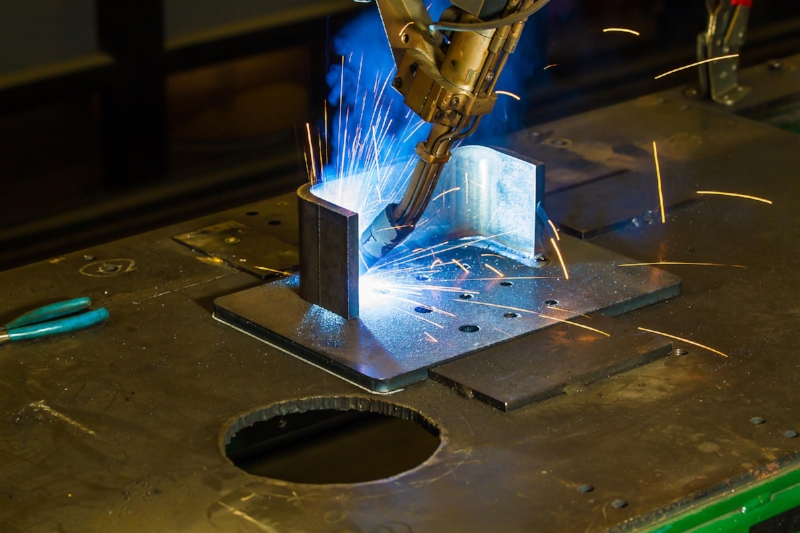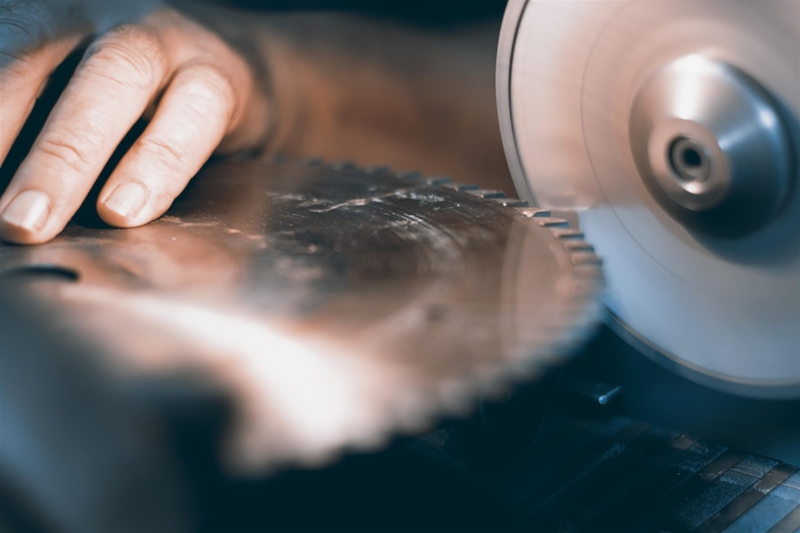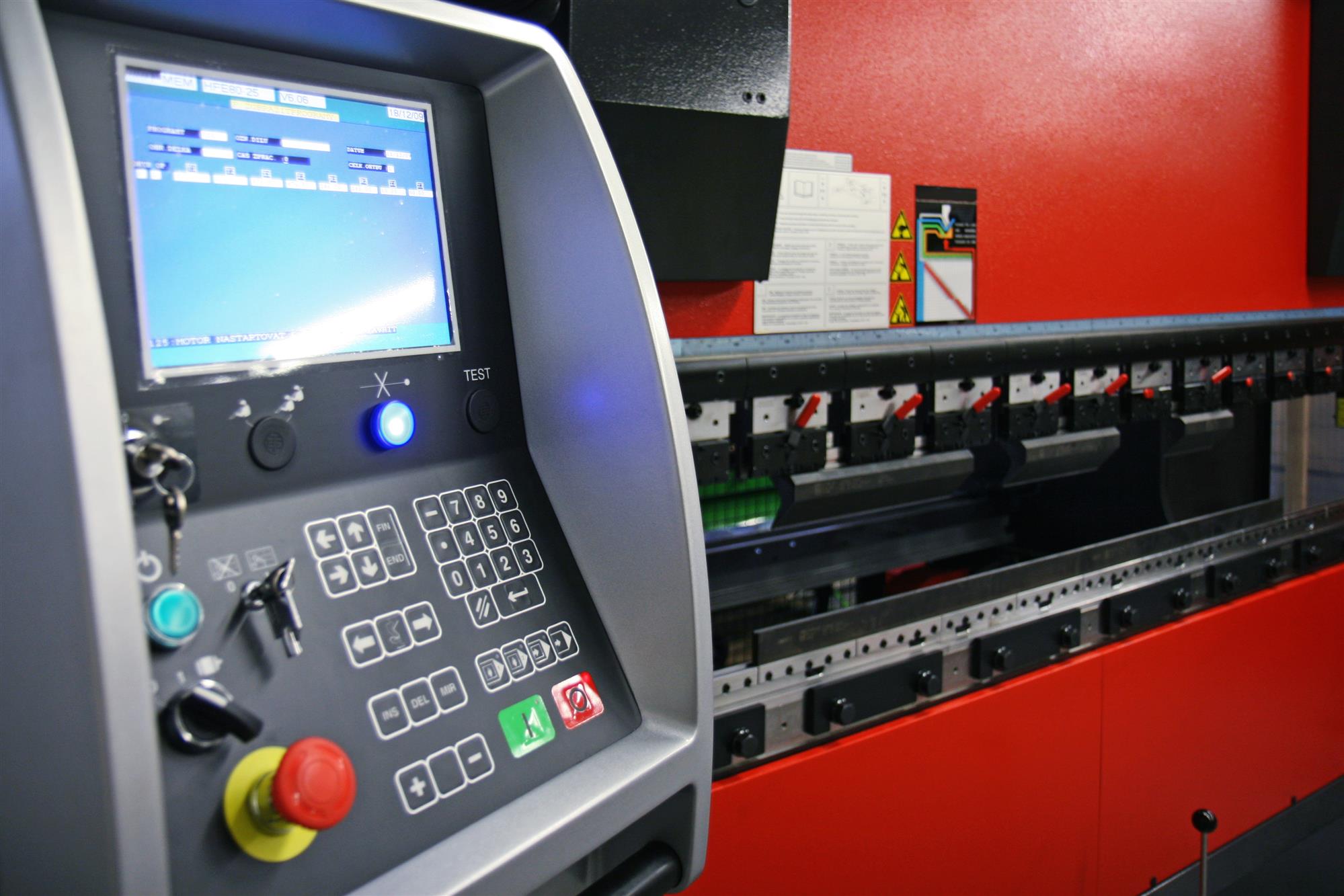Tips for Choosing Welding Tables
Are you in need of a new welding table and not sure what is best for your business? Read this blog from Quantum Machinery Group for some great buying tips.
Getting the right welding table is a significant component of having a successful shop. You don’t want a table that is difficult to use and understand, nor do you want one that’s filled with poor materials of subpar quality. Quantum Machinery Group offers welding tables that are far above the competition in durability, quality, reliability, and ease of use. Choose from options like steel saw blades, circular saws, table band saws and more to ensure that you have a table that lets you work smarter, not harder.
Not sure where to start? We’ve put together a handy guide that will help you identify your needs and find the best solution for your shop. It’s that easy!
Why Not Build One Yourself?
Some welders think they can just build a table for themselves. While this isn’t technically impossible, and experienced welders may very well be able to accomplish the task, many others do not have the time or right state of mind to get the job done.
So much work goes into creating a sturdy welding table. You’ll need to consider high load capacity, level surface, and high resistance against stroke impact. Self-builders spend a considerable amount of time working to get the table right, and that time investment can end up being sub-par when compared with purchasing a new table outright.
Why Not Go with a Different Manufacturer?
Plenty of manufacturers are available to make welding tables, so why not go with one of them? Quantum Machinery focuses on the customer. We want to provide high-quality, professional welding tables to you so you can have premium steel options for a high workload. Other manufacturers focus on creating colorful tables that catch people’s eyes. These are fun to look at, but they may not hold as much weight or be as level as they need to be.
The Quantum Machinery Group’s Welding Table Options
All of our tables are made of premium steel. They are plasma-nitrided and coated for maximum durability and longevity. This results in a wear-free, corrosion-resistant surface that resists stroke impact or damage. We also offer a diagonal grid with bored holes for further flexibility or additional clamping options—something many other tables just don’t have. You can choose a 16mm welding table or 28mm welding table, depending on your size requirements.
Need enhanced options? Table kits may be the answer. The System 16 and System 28 welding table sets come with all of the most common accessories you need to use the table to the best of your ability. Clamps, squares, stops, and bolts—it’s all packed in when you purchase for an easy setup.
In addition, we have various kits that feature a variety of items that will make your daily job tasks much easier.
Work smarter (not harder) with a Quantum Machinery welding table. These tables have everything you need to meet your welding requirements and can handle a high capacity on your busiest workdays. Find the best table for your needs by contacting us today for a quote.
Technology Spotlight: Modular design meets the press brake
Quantum Machinery Group shares a blog about how the "multi-frame" approach can reduce the mass tonnage of machines in this technology spotlight series post.
"Multi-frame" approach reduces the mass of high-tonnage machines
Originally published in The Fabricator in March 2017. Written by Tim Heston.
A press brake manufacturer uncovers an alternative to the conventional C-frame design. According to the company, the modular design eliminates the need for a conventional crowning system and makes machine installation easier.
The HD Greenbender has a modular design that accounts for deflection using supplementary hydraulics instead of a conventional crowning system.
It’s a big leap for a heavy or an industrial fabricator to invest in a massive press brake. It can give a shop some bragging rights, for sure, but installing such massive machines can be arduous affairs. They require foundation work (pit installation), and they aren’t the easiest to transport.
Big press brakes are big for a reason. Such monster machines exert tremendous force, so engineers add mass to the machine frame to deal with that force. The machine frame deflects, hence the need for crowning devices integrated into the brake’s lower beam.
But recently engineers at Portuguese machine tool manufacturer Adira Metal Forming Solutions S.A. developed a way to deal with such force in a different way. According to the company, the approach, designed into its HD Greenbender line, eliminates the need for pit installations by lowering the overall mass of the machine and making the design modular. And as the company explained, the machine has no need for a conventional crowning system.
Most press brakes are built using a C-frame, with two side housings and two beams, one fixed (usually the bottom beam) and one moving. The new approach uses a T-frame, not just on either side of the brake but also spaced evenly across the press brake’s width. The company calls this its “dematerialized” approach.
As Rui César, project applications manager, explained, “On a normal press brake, the bending is supported by the C-frame, which deflects upward when the cylinders are actuating. In this system, since the frame was dematerialized, we cannot use the same strategy, which could compromise structural integrity.
“Since we use different structural modules,” César continued, “we have several support points. Instead of having two lateral C-shaped frames and a central beam, we place intermediate supports. This allows us to minimize deformation. And the distance between frames, which can be critical on long machines, doesn’t present a problem.”
Adira calls this a “multi-frame” design. The space behind the tooling isn’t open. Instead, the T-frames across the machine introduce a throat depth across the bed, like a tandem or triplet machine. Still, sources emphasized that this is not a tandem or triplet system, but instead one machine with one upper and lower beam. Regardless, sources said that the T-frame allows machines to be designed with a very deep throat depth between the tooling and the pillar of the T-frame behind it (see photo).
“The modules are topographically optimized to their size and required loads,” César said. “If a different [open] height or [throat] depth is needed, the same compensation concept may be used, but it would require a new structure.” Using software, engineers can run simulations and tailor the design around a specified throat depth, as well as open height and stroke depth.
On each T-frame are two hydraulic cylinders, one in front and one at the rear of the machine. The two cylinders work in concert and, by doing so, can exert bending force while also compensating for deflection. This, sources said, eliminates the need for a conventional crowning system.
“The rear hydraulic actuator applies an upward force, hence compensating for the normal deflection of the structure,” César said.
“When the main cylinder exerts force, the rear cylinder compensates for deflection and keeps the system balanced. There is also dynamic control between the two [cylinders], using electronic control with sensors.”
Each T-frame is part of a module that includes a hydraulic cylinder in the front and (as shown in blue) in the back.
Last year the company introduced a 750-ton prototype, with each of the machine’s three cylinders applying 250 tons of forming force. “The total force will be proportional to the number of modules that you use,” said Filipe Coutinho, product development engineer.
“We can go up to 500 tons with each frame,” César said. Each T-frame is part of a module, and if a machine uses six modules, each exerting 500 tons, the machine would have a total tonnage of 3,000 tons. César added that the limitations would involve the dimensions and weight for transport.
Regardless, they said that the approach may open up the potential for heavy forming to more fabrication facilities, with smaller, manageable modules arriving on-site and then assembled together into a machine that, ultimately, can bend seriously thick plate.
Signs You Need to Sharpen Your Blade
Ever wonder when the best time is to sharpen the blade on your cold or band saw? Check out what signs to look for from Quantum Machinery and never guess again.
Band saw blades don’t stay sharp forever. After a while, the sharpness dulls, and the table band saw or other equipment you use no longer works as well as it once did. The best way to ward off poor performance or injuries is to keep your tools sharpened. In this short guide, we’ll teach you how to recognize the signs of a dull band saw blade so you can fix issues before they become a problem.
Material Gets Chipped
Is your material chipping when you use your blade? That’s a sign that your blade may be dull. Pieces chip off and become jagged, leaving an uneven cut and unsightly marks behind. When this happens, you need to be sure your blade is on track and get it sharpened immediately. Letting it continue to make chips will only wear out the blade completely, forcing you to purchase a replacement. Worse yet, you could even be struck or cut by a piece of material.
Excessively Loud Saw Noises
A saw with a sharpened and working blade handles its job much more quietly. Louder machine noises translate into evidence that your machine requires more work to handle the cuts. The amperage increases, and the loud buzz of the machine catches your ear. Listen to your machine to determine if it’s working right or in need of a tune-up.
The Blade Has Rounded Edges or Chipped Teeth
Saw blades have sharp edges without any chips. Each of the teeth is uniform in shape. When your blade looks like this, you know it is in good working order. As soon as you notice one tooth with a rounded edge or a chip, you know the blade is becoming dull and unusable. Check your saw blade over carefully each time you use it. Examine the teeth closely to determine if it is in proper working condition or if you need to sharpen it instead.
Burn Marks Appear on the Material
When the blade has to work overtime to make its cuts, it can overheat and burn the material. Burn marks that appear on your material indicate a dull blade that needs to get re-centered and re-sharpened. Never continue with your cuts if you notice these marks. It is important that you stop what you are doing immediately and make the necessary changes so no further damage is done.
Before you sharpen any blade, be sure to clean it first. Getting rid of the dust and grime could help make your steel saw sharper than ever. Look for these signs before each use, and after you clean, to see if the blade needs any maintenance. Need assistance with a machine or blade? Contact Quantum Machinery Group today for a one-on-one consultation.
Should You Buy a Hydraulic, Hybrid, or All-Electric Press Brake?
Hydraulic, hybrid, or all-electric press brake? Quantum Machinery shares details about each one to help you choose the best one to buy for your company.
Press brake machines have made remarkable advances due to changes in technologies over the past decade. If your current machine is more than a decade old—which is understandable, given the sturdiness of most models—and you are in the market for a new machine, you need to determine which type of modern machine will work best for your machine shop or metal fabrication business.
Heavy-Duty Hydraulic Press Brakes
The hydraulic machines you might be the most familiar with offer a variety of new features and energy-saving options. Modern machines are built using energy-saving timers and more advanced pump mechanisms. Modern hydraulic models are well-suited for shops that work with a wide range of metric tons for producing both small and large parts.
In addition, they are better for businesses that tend to work mostly with manufacturing bigger parts requiring over 250 metric tons of power. The only drawback is in cases where the machine does not have energy-saving features because that means the machine is always on, even when it is not being used.
All-Electric Press Brakes
With all-electric models, the key difference is they do not use hydraulics to bend the metal but, rather, rely upon electric motors that drive the bending mechanisms. The motors only turn on during bending processes and automatically shut off whenever the machine is not being used. Some of the advantages of all-electric machines include:
• Improved Accuracy
• Faster Output Speeds
• Electricity Savings
However, one of the drawbacks of electric-only machines is they require about twice the amount of electricity to create the same amount of metric tons as a hydraulic machine. Another disadvantage is they can only handle smaller parts and can only generate up to 80 metric tons of bending power.
Hybrid Press Brakes
Hybrids can offer the best of both hydraulic and all-electric models. Hybrids do not have gear pumps, like hydraulic models, but do use hydraulics to assist with bending processes. Rather, a servo-drive system is used to direct the flow of hydraulic fluid into the machine’s cylinders.
Just like all-electric machines, they shut off whenever they are not performing bending functions, to help save electricity and energy. Hybrids are perfectly suited for shops that create parts requiring up to 250 metric tons bending power.
Which Press Brake Machine Is Best?
It really comes down to what types of parts you are creating and the number of metric tons you need to generate to manufacture those parts. If you specialize in small parts, then an all-electric model could be perfect for your business needs. On the other hand, if you work with a more diverse range of parts that require greater metric tons to create, then either a hydraulic or hybrid would be the better choice.
For assistance in determining which type of press brake machine is the best choice for your shop, call the experts at Quantum Machinery Group by phoning (909) 476-8007 today!
Differences Between 2 Roll, 3 Roll, 4 Roll and Geometry Plate Benders
When you need to know the differences between 2 Roll, 3 Roll, 4 Roll, and Geometry Plate Benders, Quantum Machinery shares tips in our blog and is here to provide advice.
Choosing the right roll plate bender for your machine shop or metal fabrication business requires understanding the differences between each one, and their unique characteristics, uses, and advantages. It is important to understand what types of output each machine is able to create, along with what finishing processes you need to perform manually.
2 Roll Plate Benders
A 2 roll plate bender is capable of creating cylinder shapes, semi-circles, and other basic curved shapes. Machines consist of two rollers between which the sheet metal is passed, and then the force of the rolling causes the metal to bend into the desired circular shape. Some models do provide the ability to create flanges, but they do not support cones or other detailed geometric shapes.
3 Roll Plate Benders
3 roll plate benders can perform the same functions as 2 roll bending machines. The key difference is that, with 3 roll bending, you have greater control over the desired output shape. The most common ones support single-pinch bending functions, which require inserting the sheet metal twice to pre-bend both ends. However, there are also double-pinch models available to make pre-bending processes on both ends easier, faster, and more precise.
4 Roll Plate Benders
The biggest benefit a 4 roll plate bender has over 2 roll and 3 roll bending machines is it makes bending processes easier and simpler. These machines are fully capable of performing the same functions as a 2 or 3 roll machines. Some models also can perform similar functions as a press brake. Furthermore, 4 roll benders make it possible to create rectangular and square-shaped output by carefully bending the metal in specific areas as it passes through the machine.
Geometry Plate Benders
This type of plate bender provides flexibility by allowing the operator to work with a wider array of metal thicknesses and achieve more precise results. Geometry plate benders are also capable of creating a variety of geometric shapes, like cones, and can be used to create 2 roll and 3 roll bending output.
Which Bending Machine Is the Best?
One of the key decision-making factors you should consider is not only what type of plate bender will meet your current needs, but which could also satisfy future business needs. For instance, if you currently need a machine that can crank out large volumes of cylinder shaped materials, all four types of benders can perform this task.
If this is the only type of output you create, then a 2 roll bending machine could easily satisfy your shop’s needs. On the other hand, if you also are considering expanding your operation to offer a greater variety of shapes or are looking to increase the precision of the output, then a 3, 4, or geometry bender might be the better choice.
For assistance in selecting the best plate roll bending machine for your business, please feel free to contact Quantum Machinery Group at (909) 476-8007 to speak with a representative today!










